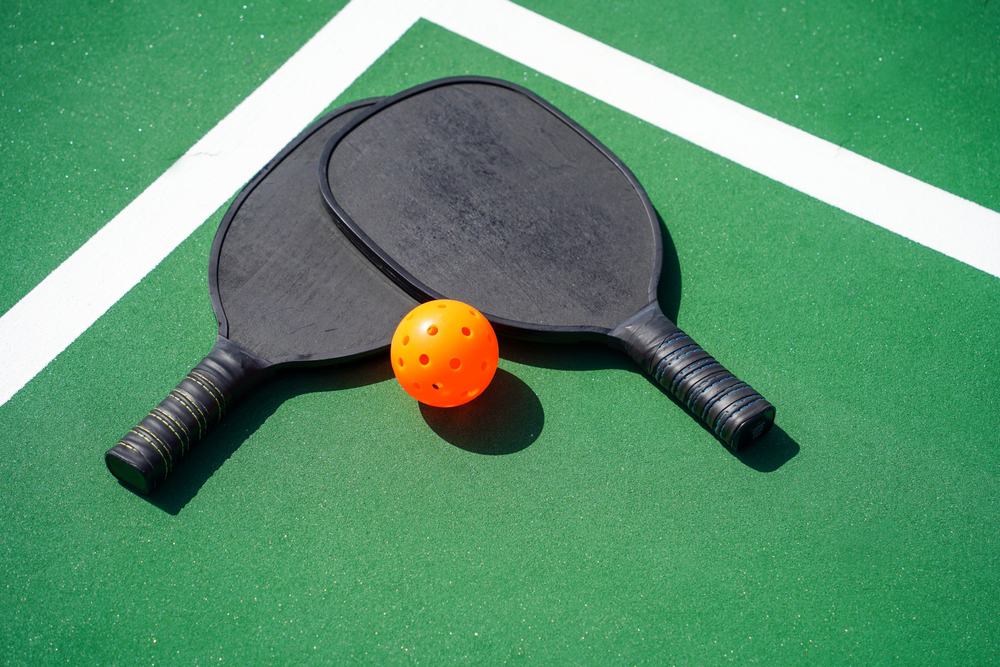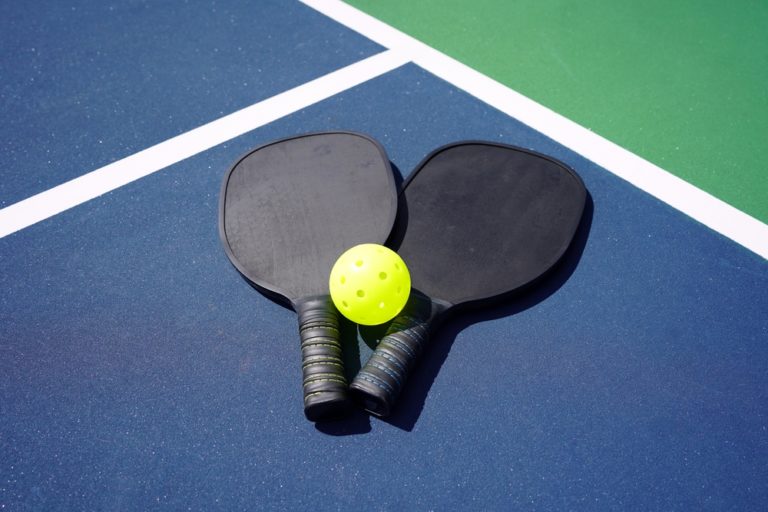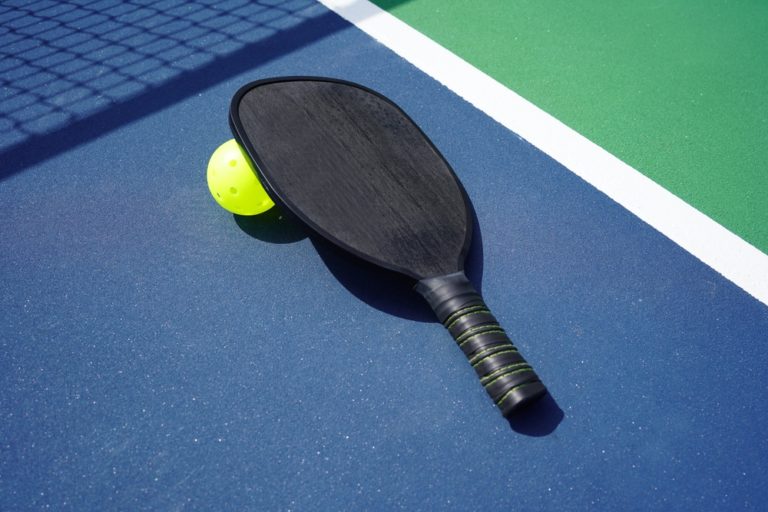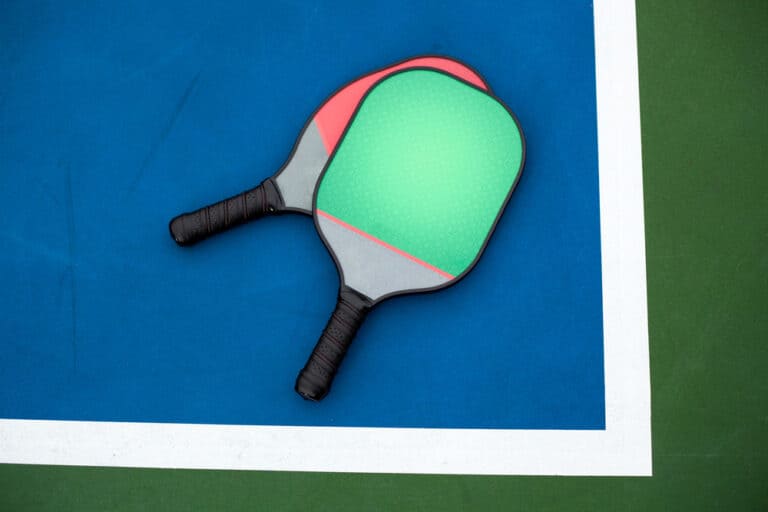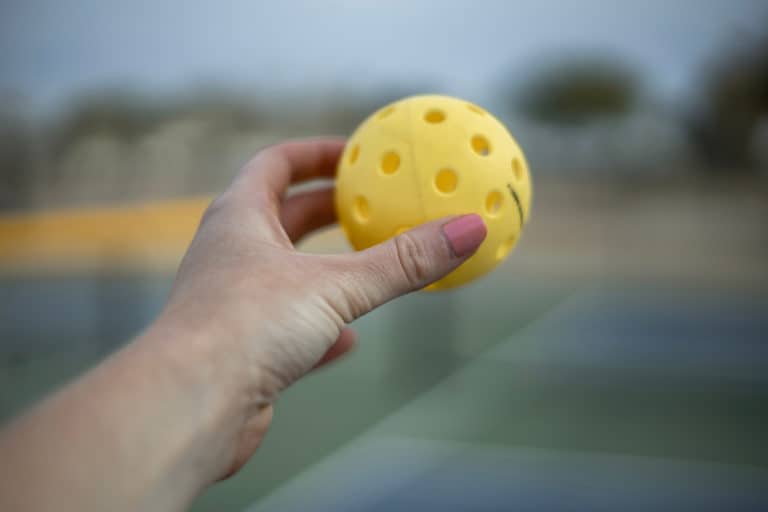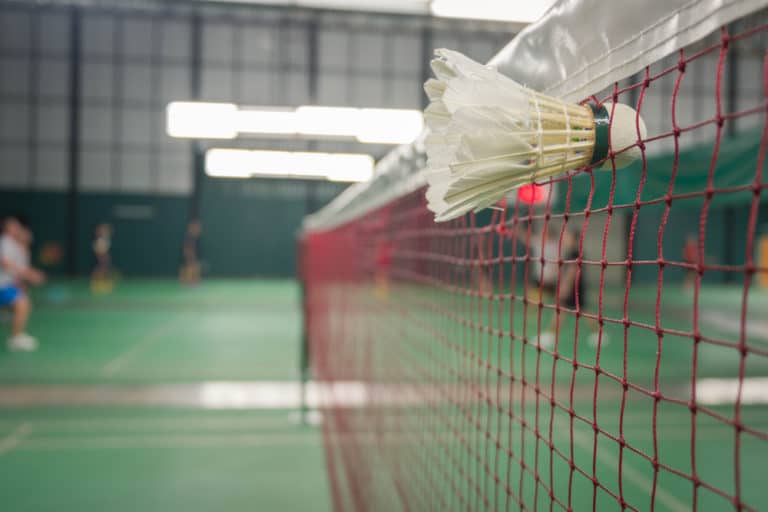What Is The Best Composite For A Pickleball Paddle?
Pickleball paddles range in quality and price, from the basic and cheap “good for casual or beginner players” to the ridiculously expensive “used, co-designed, and signed by the pros.” The biggest part of what makes a pickleball paddle great (and expensive) is the composites or materials used to make it. So, while keeping that in mind, what is the best composite for pickleball paddles?
Fiberglass is the base of all composites in pickleball paddles, and manufacturers use it because of its springiness compared to other materials. The best and most popular composite is a mix of fiberglass with vinyl because vinyl makes it more solid and adds a bit more weight to the paddle.
The word “composite” refers to a mix of materials that the pickleball paddle is made of. All pickleball paddles have a core and a surface. When we’re talking about composites, we are referring to only one of the material types that can be used to manufacture the surface of a pickleball paddle. There is a nearly unlimited number of different composites. Let’s look at the composites in more detail.
Why Does The Best Composite Matter In A Pickleball Paddle?
The surface of a pickleball paddle is usually manufactured with one of three materials: graphite, carbon fiber, and composites. Saying that a paddle is made of a composite is almost equivalent to saying “almost anything else” because there are so many different composites that it’s often hard to specify what they are. There are similarities, though. But why does it matter?
Each part of the pickleball paddle serves a different purpose. The core keeps the paddle sturdy and springy, helping to guide the ball with the type of shot you want to play. The grip is essential because its materials can add or reduce strain on your arm, wrist, and hand. And the surface material is crucial because it determines how much spin the ball gets and gives you control.
As an example of how much difference the surface material can make, let’s compare the three common materials that a pickleball paddle’s surface can be made of.
Graphite
Graphite is a stiff and rigid material but also thin and lightweight. As such, graphite paddles tend not to weigh much, which gives you excellent control over short distances, like playing the ball in the kitchen. The short back-and-forth shots close to the net will benefit significantly from a graphite pedal, and you will be able to maintain the momentum for longer because it is so light.
Carbon Fiber
Carbon fiber forms a grainy surface on the paddle, and rougher textures tend to add more spin to the ball, especially during power plays. Carbon fiber has the advantage of giving both control over soft shots and spin in power shots, which is why the pros often prefer to play with carbon fiber; it’s the best of both worlds. It is very expensive, though.
Composites
Composites fall somewhere in between. They offer varying levels of control and spin depending on the exact materials that the composite is made of. The benefit of a composite paddle lies in the fact that it isn’t a single material, like carbon fiber or graphite, but a mixture, which means that it can add the best properties of each material to the paddle’s surface.
The crucial point to remember is that, though composites form a middle ground between graphite and carbon fiber, that middle ground is a vast range of options. The aeronautics industry constantly develops new and improved composites, and as better mixtures are discovered, they eventually filter down to pickleball paddles.
Some are proprietary composites, so there’s no indication of what goes into it along with the fiberglass. This means that composite pickleball paddles range in quality (and price) from low-end to high-end. If you buy a cheap composite paddle, it will be an inferior mixture that won’t give the best performance. A more expensive composite paddle can perform well enough to play in the pros.
Composite paddles can be heavier than graphite or carbon fiber paddles, but that’s not always a bad thing. Having more weight in the right places can help you play harder shots and drive the ball more forcefully, even adding some spin to the ball in the process.
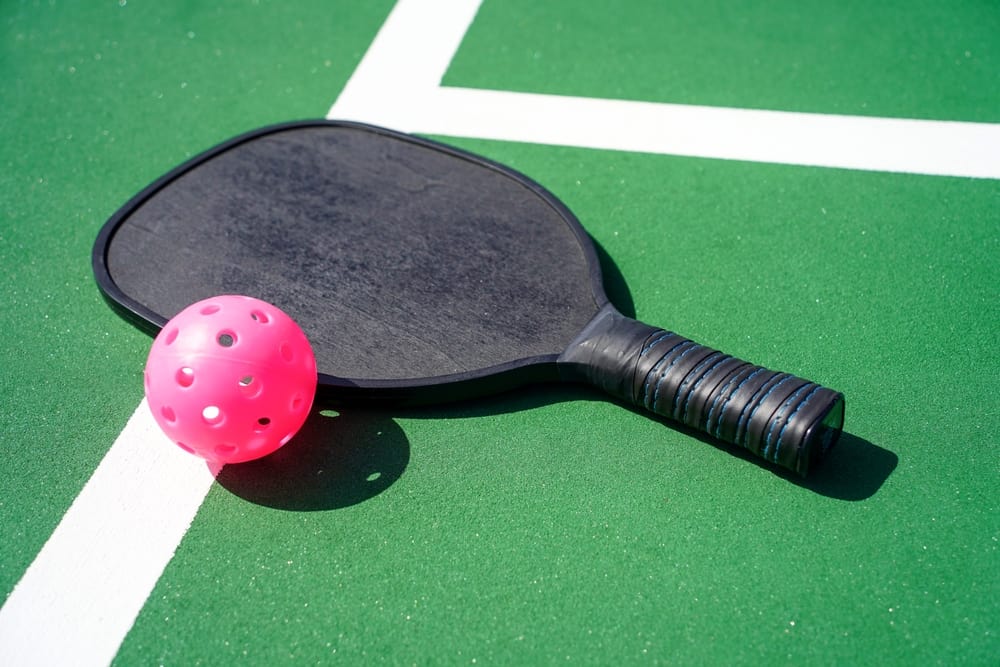
What Is The Best Composite For A Pickleball Paddle?
Now that we know what difference a good composite can make, let’s find out what the best composite is.
Fiberglass
This actually goes without saying because fiberglass forms the heart of all composites. But there’s a good reason for that. Fiberglass is more flexible than graphite and carbon fiber, which means that the paddle can reflect the ball back with more “pop” than other materials. As the ball’s momentum pushes the fiberglass inward towards the core, the fiberglass then returns the ball with more force.
Some of the best-rated pickleball paddles only have pure, high-density fiberglass surfaces; the only material that is mixed in with the fiberglass to form a composite is a UV-resistant material that adds some texture. If you can find a paddle with a pure fiberglass surface, and it’s not the cheapest one around, that will probably be a good buy.
Fiberglass-Vinyl
There are certain advantages to using a pickleball paddle with a fiberglass-vinyl composite. While fiberglass is already a solid but springy material, it tends to be a bit smooth to use on its own. Vinyl adds a fine layer of texture to the paddle’s surface while also reinforcing its solid structure and springiness.
Vinyl is also heavier and thicker than fiberglass. Using this composite may lead to a slightly thicker paddle that also has more weight. This could be an advantage and a problem simultaneously since heavier paddles can drive better power shots, but it’s also much harder to play consistently with a heavier paddle without getting tired or placing strain on your arm, wrist, and hand.
Professional players will do well by going for a fiberglass-vinyl composite paddle. The added weight won’t be a problem since many pros go for heavier paddles anyway and might even pay extra for materials like lead tape to increase their weight.
Proprietary Composites
This “unspecified category” deserves to be mentioned. As we’ve seen, scientists in the aeronautics industry are constantly experimenting with different composites to improve the existing ones. The consequence is that we already have hundreds of different composites available, with more being discovered regularly. Many of these composites are proprietary to the developer.
As these composites filter through to the pickleball industry, paddle manufacturers experiment with their benefits and advantages to find which ones are the best fit for different styles of pickleball. They then release new paddles with those composites to give players the added advantages that they bring.
With this in mind, most probably the absolute best composite for a pickleball paddle is one of the proprietary ones. Often just referred to as fiberglass, or a proprietary name, like the Nexxed Victor XL’s “Nexxed Proprietary Glass Fiber” composite surface. This composite, for example, has proven to give a marked advantage to players that use it, and the reviews are excellent.
The problem is that these composites cannot be clearly defined as there is such a wide range of them, and because of the secrecy with which the manufacturers develop their unique composites. The best advice is if you don’t want to go for a “classic” fiberglass composite, read the reviews of different proprietary composites, and don’t be afraid to try them out. You might find one you love.
Conclusion
The range of different composites is almost as wide as the number of different pickleball paddles on the market today. Specifying which is best is a complex matter. A good, dense fiberglass composite is already excellent, and you often don’t have to look any further. If you really want to squeeze some extra performance from your paddle, a proprietary composite might be just what you’re looking for.
References
- https://www.si.com/review/best-pickleball-paddle/
- https://gruvn.co/pages/how-to-choose-a-pickleball-paddle
- https://www.amazon.com/s?k=composite+pickleball+paddle&s=price-desc-rank
- https://www.amazon.com/Prince-Response-Composite-Pickleball-Paddle/dp/B08NRW1NBV/
- https://www.tencom.com/blog/fiberglass-properties-and-applications
- https://www.tencom.com/blog/fiberglass-composite-what-is-it-and-what-are-its-application-areas
- https://www.justpaddles.com/blog/post/best-pickleball-paddles-for-power/
- https://www.thirdshotdrop.com/blog/why-you-should-care-what-your-paddle-made-of.htm
- https://www.youtube.com/watch?v=pIprHueVR9c

